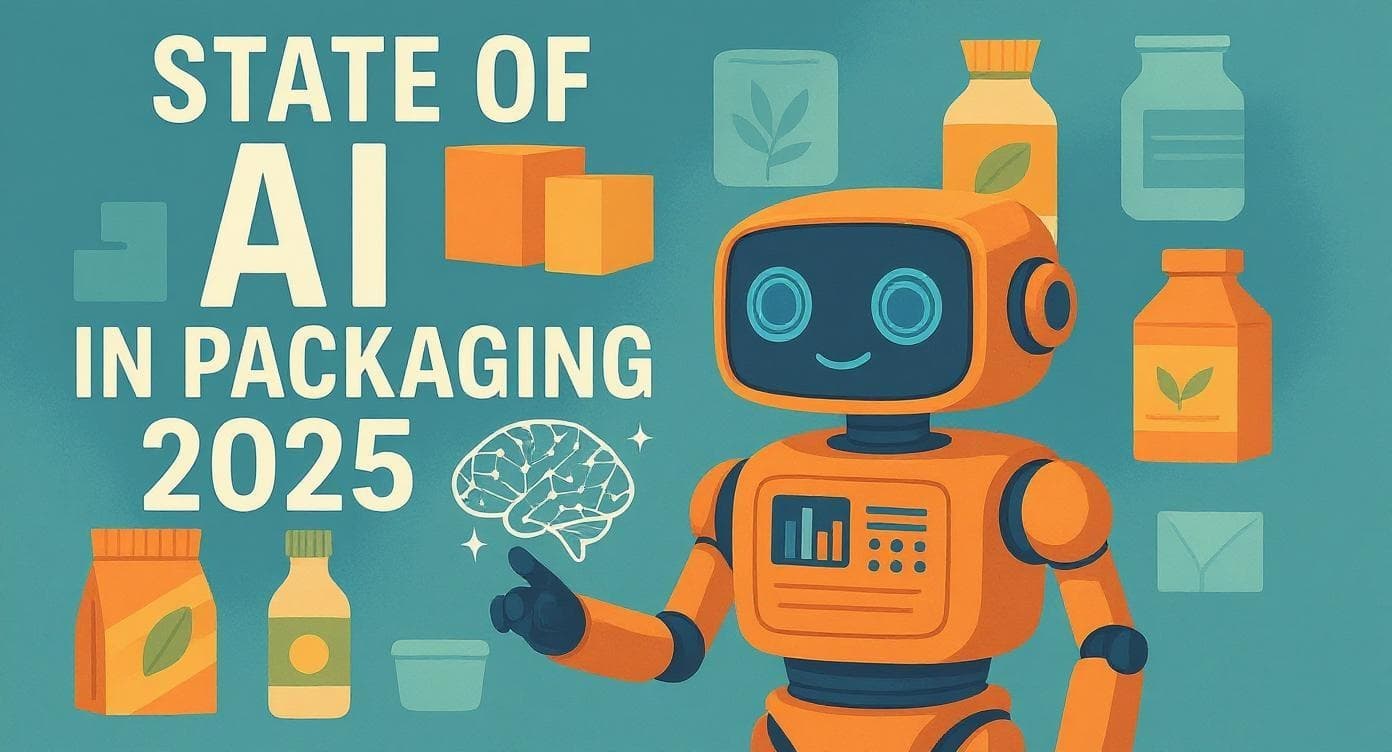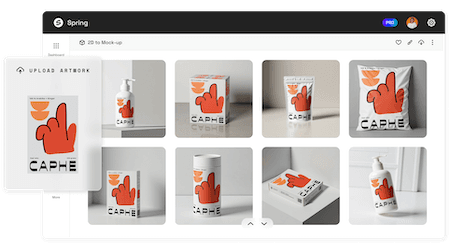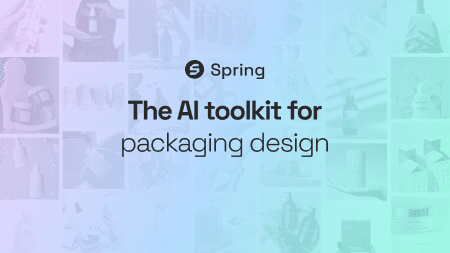Blog PostCompostable plastic packaging: the perfect solution for plastic waste?
- Sustainability
- Materials
Mattia Dell'OvaSeptember 18, 2023 - 6 min read

To achieve net zero and limit the worst of climate change, we have to rethink our reliance on plastic.
This statement is more urgent than ever, but the problem with plastics is unfortunately much bigger than just climate change. In reality, plastics also directly threaten human health and endanger habitats when leaked into the natural environment.
Paradoxically, one of the main culprits of this damage is also claimed by some as the next green solution — compostable plastics.
With the surge in demand for compostable packaging, we felt compelled to provide our clients with a scientifically-grounded perspective to understand if they truly offer a more sustainable alternative to traditional materials like paper and conventional plastics.
As presented in more detail in the rest of the article, we found out that compostable plastics, albeit reducing the risk of microplastic generation, still have detrimental effects when leaked into the environment.
We also observed that compostable plastics release 2x more Greenhouse Gases than plastics and 4x more than paper bags across the life cycle.
The consensus on compostable packaging is unclear
The biodegradable plastics market is projected to expand 2-3x between 2021 and 2026 [1], and at Sourceful, we’ve seen firsthand the escalating demand for compostable packaging.
But whilst many brands are running towards compostable plastics, seduced by promising sustainability claims, such as “eliminate microplastic pollution”, or “100% biodegradable and compostable”, the consensus is still murky, with other companies (like Tesco and Abel & Cole) publicly distancing themselves from them.
The lack of a global consensus is corroborated by the UK Government and EU Commission positions, as they recently expressed the importance of life-cycle-based evidence to validate in what use cases compostable plastics bring sustainability benefits compared to non-degradable plastics [2], [3], as well as by their inclusion in the single-plastic ban [4], [5].
In this context, we want to use our research to help fill the vital knowledge gap and build consensus. Our focus is on two key areas where compostable materials are generally claimed to improve on conventional plastics: their environmental impact when leaked and their effects on climate change.
Compostable plastics and leaked waste
One of the major environmental impacts of plastics (fossil and compostable) is their ability to persist in the environment when leaked, creating detrimental effects on natural habitats and living creatures.
Leaked plastic waste generates both physical (e.g. animals ingesting microplastics or being entangled in larger pieces) and chemical risks (e.g. the leaching of toxic additives like plasticisers and flame retardants) to wildlife from the breakdown of plastic into microplastics and nano-plastics.
The longer a plastic takes to break down, the more likely it will be ingested or cause entanglement, increasing the risk of adverse effects. To account for this, we partnered with the Sustainable Materials Innovation Hub at the University of Manchester, assessing each material for its degradation time in freshwater, marine, and soil environments.
Our study found that whilst compostable plastics do reduce the risk of some adverse effects, they are not a cure-all for plastic pollution. Compostable plastics can persist in the natural environment for over half a century, which puts into question the popular claim that these plastics are the next green solution. This matches up with the conclusions that Narancic et al. made in their study [6]. Here’s an overview of degradation times for fossil plastics and common compostable plastics:
- Fossil plastics take around 4-5,500 years to degrade in soil (with some studies suggesting this is even higher, at around 10,000 years); the worst and longest degradation time amongst all plastics. This is made worse by the common use of harmful additives [7].
- Compostable plastics like PLA take on average 1-63 years in soil [6] to degrade completely. In water, PLA does not degrade at all.
- Other compostable plastics like TPS and PHB take on average 4-6 months to degrade completely.
So compostable plastics do have a tighter degradation window than fossil plastics, and they also typically contain fewer toxic additives. But they still can have a long degradation window, especially and unfortunately PLA, one of the most common materials used in compostable packaging (including coffee lids and bags).
Admittedly, it is still hard to know the exact time it takes for a plastic to decay; the field of estimating polymer lifetimes is still relatively new. But we do have enough comparative data to give us an indicative hierarchy of materials that we can use to assess performance and inform decisions.
Compostable mailer bags release 2x more Greenhouse Gases than virgin plastic mailer bags across the life cycle.
In our quest to understand the environmental impact of different materials, we compared the life cycle impact of mailer bags made of 22 different materials, which we then grouped according to their market share. The groups included compostable plastics (e.g., PLA, PHA, and TPS), recycled and virgin fossil plastics (e.g., LDPE, HDPE, and PP), bio-based non-degradable plastics (e.g., bio-LDPE), and paper materials (e.g., glassine and kraft paper). It's worth noting that the bio-based materials we studied are representative of 75% of the global bio-plastic market share [8].
For the purpose of this study, we assumed that the bags were produced and disposed of within the UK waste system.
Our findings were quite revealing. We discovered that compostable plastics release, on average, 4x more CO₂e than paper, 3x more CO₂e than recycled fossil plastics, and 2x more CO₂e than virgin plastic mailer bags across their life cycle.
So, why do compostable plastics have such a high carbon footprint?
The answer lies in the lack of collection, sorting, and waste management systems for these materials in the UK. Compostable plastics account for 0.5% of the plastic market, which means their low volumes don't justify the cost of household collection and sorting schemes.
The inefficiencies of existing industrial composting facilities to separate and process flexible plastic packaging mean that about 50% of compostable plastics end up in landfills. Here, they slowly degrade over time, releasing methane—a greenhouse gas that's 32 times more potent than carbon dioxide.
What about home composting?
A 4-year citizen project conducted by the UCL Plastic Waste Innovation Hub enquired into the reliability of the home compostability claims, finding out that more than 60% of the plastics certified home compostable failed to disintegrate after six months in home composting heaps, raising concerns about the reliability of tests and certifications for compostable plastics [9].
What does this mean for my packaging?
It’s clear that we need to move away from fossil plastics. And in their current state, compostable plastics are not the next green solution. So, what’s the answer?
First, brands should follow the waste hierarchy. Can this packaging component be removed? Can we use less materials without compromising function? How can I design this product so it’s easy to recycle?
Second, brands should prioritise responsibly sourced paper if possible, which typically has the lowest impact of any material. Its full life cycle emissions are low, and there’s no risk of microplastics if leaked. That’s not to say it’s perfect; forests are often mismanaged and producing and recycling paper still generates emissions, uses large amounts of water and potentially also harmful chemicals. This is why certifications like the Forest Stewardship Council (FSC) and Programme for the Endorsement of Forest Certification (PEFC) are so important.
Paper isn’t appropriate for every use-case and product, such as liquids. This is why we stress prioritising paper if possible. Packaging should always be carefully matched with the product, and blanket rules rarely result in success.
Notes
Thanks to Dr. Guilhem de Hoe and Dr. Chloe Loveless from the University of Manchester for leading the collaboration.
Thanks to Professor Aiduan Borrion for the critical review of the Life Cycle Assessment study, ensuring the analysis met a high standard.
Our study focused on the typical compostable plastics currently seen on the market (PLA, PBAT, PHA and TPS). Our study did not include a nascent group of materials classed as unmodified natural polymers, which we’re interested in exploring in the future.
References
- MarketsandMarkets. (2021). Biodegradable Plastics Market - Global Forecast to 2026.
- BEIS, 2021. Standards for bio-based, biodegradable, and compostable plastics. Summary of responses to the call for evidence and Government Response. HM Government. https://assets.publishing.service.gov.uk/government/uploads/system/uploads/attachment_data/file/976912/standards-biobased-biodegradable-compostable-plastics.pdf
- European Commission, 2022. Biobased, biodegradable and compostable plastics. Link plastics are,in land use.
- DEFRA, 2024. Single-use plastics bans and restrictions guidance. Link types of single-use,plastic%2C including coating or lining
- European Parliament & Council of the European Union, 2019. Directive (EU) 2019/904 of the European Parliament and of the Council of 5 June 2019 on the reduction of the impact of certain plastic products on the environment. Official Journal of the European Union, L 155/1-19. Link
- Narancic, T., Verstichel, S., Chaganti, S. R., Morales-Gamez, L., Kenny, S. T., De Wilde, B., Padamati, R. B., & O’Connor, K. E. (2018). Biodegradable Plastic Blends Create New Possibilities for End-of-Life Management of Plastics but They Are Not a Panacea for Plastic Pollution. Environmental Science & Technology, 52(18), 10441-10452. Link
- Chamas, A., Moon, H., Zheng, J., Qiu, Y., Tabassum, T., Jang, J. H., Abu-Omar, M., Scott, S. L., & Suh, S. (2020). Degradation Rates of Plastics in the Environment. ACS Sustainable Chemistry & Engineering, 8(9), 3494-3511. Link
- European Bioplastics, 2022. ‘Bioplastics market data’. Link
- Purkiss, D., Allison, A.L., Lorencatto, F., Michie, S. and Miodownik, M., 2022. The Big Compost Experiment: Using citizen science to assess the impact and effectiveness of biodegradable and compostable plastics in UK home composting. Frontiers in Sustainability, [online] 3, p.942724. Available at: https://doi.org/10.3389/frsus.2022.942724 [2024].








